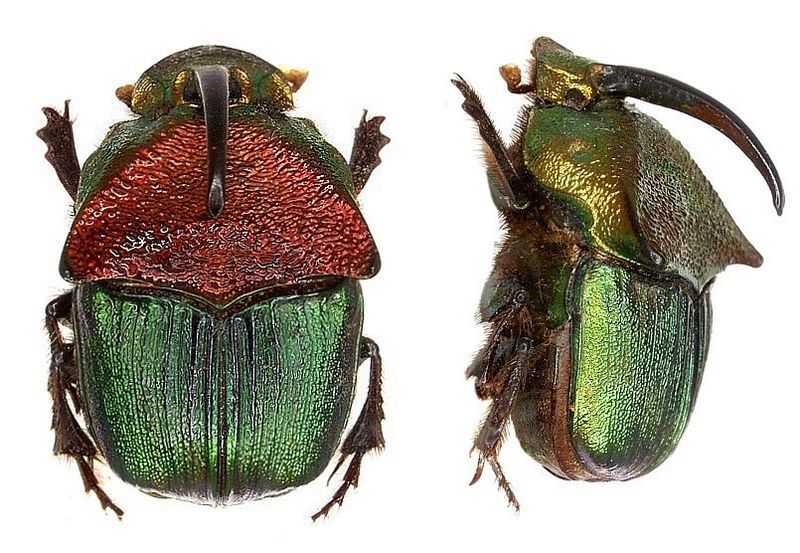Reproduction
The Phanaeus genus
was first given their name by William Sharp Macleay, based up
the shape and structure of their antennal lamellae. These
beetles were first discovered around the later 1700’s to early
1800’s. Although 34 of the species of Phanaeus we are familiar
with today were discovered between the dates 1830 and 1890
(Edmonds, 1993). Even though we have known of the beetles
for so long, and they have been researched greatly, there are
still grey areas in terms of how these organisms reproduce.
When looking for a mate, we
Homo sapiens
want an individual or partner who will put as much effort into
the relationship and parenting as we do. Turns out, those
Phanaeus females are no different, they are looking for a male
that is willing to invest just as much as she is (Price & May
2009). Another feature that seems to appear attractive to
the females of the Phanaeus genus is the size of the horn on the
male. Though this may seem to be relatively true, not much
is known about the reproduction of these beetles, but horn size
may be a contributor to the reproductive success of the males
(Rasmussen 1993). To look at another organism that has
large horns,
click here!

As far as when reproduction occurs,
in areas like the United States where Phanaeus vindex calls
home, the beetles are more active during the rainy or wet
seasons as opposed to the dry seasons, considering that most of
the dry seasons here in the United States are colder than other
places. In warmer and wet climates however, Phanaeus
species are active all year round meaning that reproduction does
not necessarily occur at a specific time. During the
breeding season, the males and females meet at a food source,
once a food source is located and a male and female are present
and ready to mate, a burrow is made and a “room” if you will is
created called the gallery. The mating process does not
always happen as simply as this however. In many cases,
males will have to compete for their females, and whoever fends
off the other male wins the female. Also, females are not
always ready for reproduction once the burrow is created.
Many times the couple will have to live in the burrow for a
substantial amount of time, where the female will feed and get
herself well suited for reproduction (Price & May 2009). In the
gallery, “brood balls” are constructed by small pieces of dung,
and are coated with a layer of dirt. These balls are pear
like shaped, and in the small upper cavity, a single egg is
withheld (Edmonds 1994). However, none of this happens
unless a male and female have sexual intercourse before nesting.
All of the eggs that are in the brood balls are fertilized
before the whole burrowing process begins.
It has been found that a lone female that has not mated with a male, will not make a burrow for herself, a nidification burrow that is (Price & May 2009). Females that do have a partner will also have deeper burrows than lone females, due to the help of the male in the burrowing process. Once the brood balls and the eggs are in place, the adults do little to nothing in aiding to the brood balls. The eggs eventually turn into larvae, and the larvae feed on the dung that was constructed into the brood ball (Price & May 2009). It has been found that P. vindex prefer clay like soils versus sandy soils. It was observed that larvae of P. vindex had a much greater survival rate than those larvae in the sandy like soil (Price & May 2009).
Feeling lost? Click here to go back Home! If not, take a look at the Interactions page!
To see where we got our information, go to the References page!